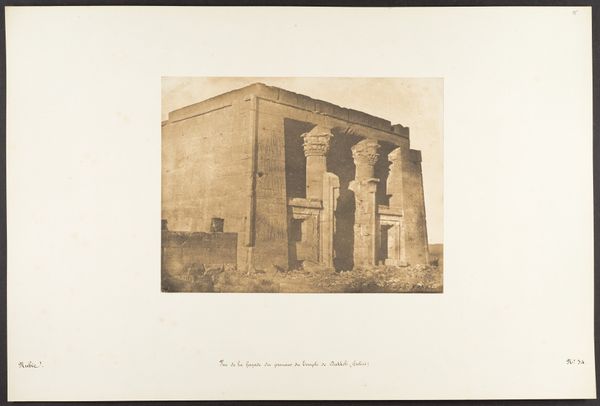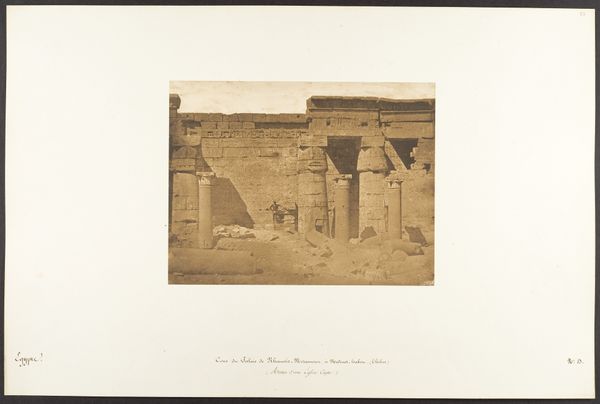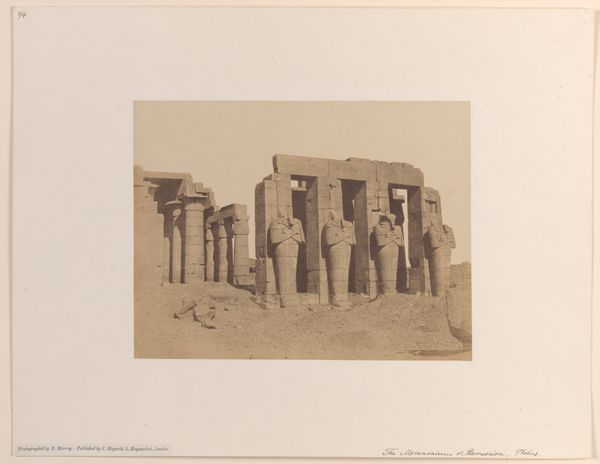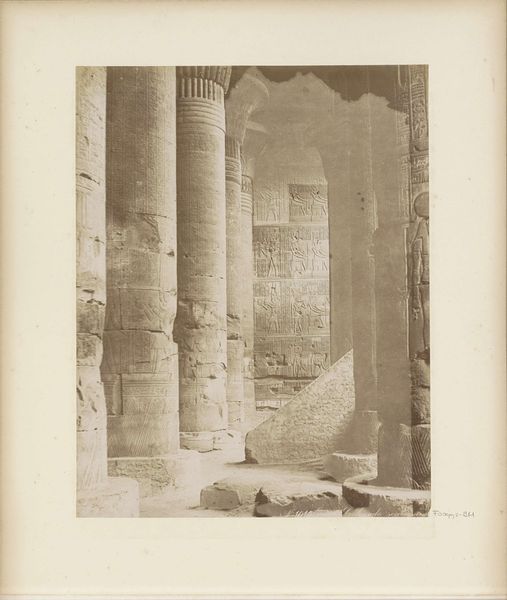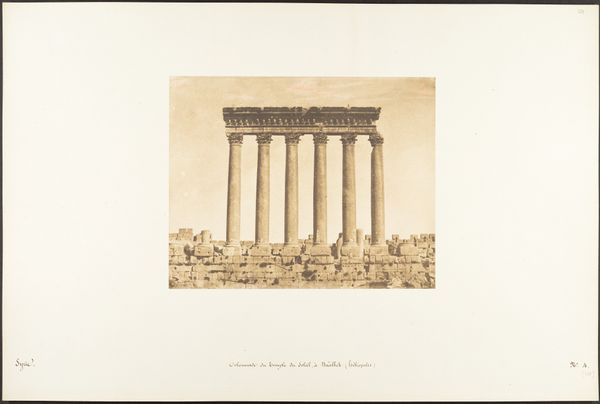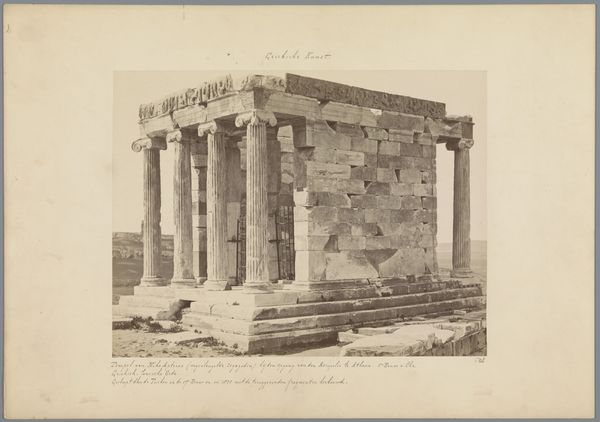
Colonnade occidental du Temple de Jupiter, à Baâlbek (Héliopolis) 1850
0:00
0:00
daguerreotype, photography, architecture
#
landscape
#
daguerreotype
#
photography
#
ancient-mediterranean
#
architecture
Dimensions: Image: 6 11/16 × 8 11/16 in. (17 × 22 cm) Mount: 12 5/16 × 18 11/16 in. (31.2 × 47.5 cm)
Copyright: Public Domain
Curator: Standing before us is Maxime Du Camp's 1850 daguerreotype, "Colonnade occidental du Temple de Jupiter, à Baalbek (Héliopolis)," a photographic document of the Temple of Jupiter's western colonnade. Editor: The monumentality of the site really comes through. It is aged, and weathered, but undeniably imposing. I immediately zoom into thinking about the incredible effort involved in quarrying, transporting, and assembling such enormous stones. Curator: It certainly reflects the ambition of Roman imperial power in the region. But I wonder if it's possible to go deeper than marveling at the stones, thinking about labor beyond Roman engineers. How did this represent the politics of its time and even of Du Camp’s era? Editor: That's a very interesting point. We see the end product of imperial ambition. We see it as something monumental and almost devoid of labor in that classical framing. For Du Camp, as for the Romans, the social complexities are erased in favor of aesthetics and an ideal vision of power. Curator: Right. Du Camp presents this colonnade absent of the indigenous communities that would have interacted with, or been directly affected by the construction and function of the site, both then and now. The labor—both enslaved and paid—the political dynamics, are essentially framed out by the photographer. How do we bring those stories to the forefront, considering that photography, in its own right, requires certain labor from those pictured in frame. Editor: What’s also critical for me is thinking about photography in 1850 as a technological marvel – a chemical and physical process tied up with extraction and industrial development. How did these processes tie back to colonial control? We think of it simply as a transparent document. But this work here demands attention to the very real work necessary to produce and fix this image. Curator: Exactly. It allows us to connect what the image shows, and what the materiality of its own making might omit. Considering intersectionality allows for more meaningful questions and contextual understanding of Du Camp's vision. Editor: Indeed. Focusing on materiality and labor exposes the deeply embedded networks of extraction and construction and raises ethical issues that are so urgent now. I appreciate Du Camp bringing up questions like this to the forefront, even if it wasn't intended to do so when it was initially shot.
Comments
No comments
Be the first to comment and join the conversation on the ultimate creative platform.
